Adapting to a Tracheostomy
Things to consider when your child has a tracheostomy.

Shirts with buttons down the front or with larger openings for the head are easier to put on.
Be sure the neckline is not too close to the trach.
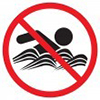
No swimming.
Children with a trach cannot submerge in water.
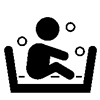
While bathing your child be sure not to get any water in the trach.
Your child must never go under water.
Never leave a child alone in the tub.
Older children may shower using a shower guard.

It's important to clean your child's mouth twice a day.
Older children can brush as normal.
For a younger child you can swab your child’s mouth with gauze or use a finger tooth brush. You may need to suction out the mouth after brushing and rinsing teeth.
Cleaning mouth/teeth helps to prevent your child from getting sick.
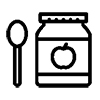
Softer food are easier to swallow.
Follow the direction of your doctor and speech therapist.
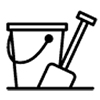
While playing outside, sand or dirt should not be allowed anywhere near the trach.

Warm weather humidity may make breathing difficult or change the consistency of their secretions.
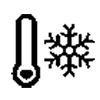
Breathing cold air may cause the airway to spasm or tighten.

Even though your child is not breathing through their nose, they still can be affected by allergens, such as pollens or perfumes.
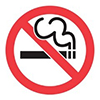
Smoking should never be allowed near a child with a tracheostomy.
It's best to reduce or eliminate environmental irritants such as smoke from a woodstove or fireplace, pet dander, and household dust.
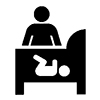
Place infants less than 1 year old on their backs for naps and night time sleeping. Positioning tips below are important for an infant’s development and should be supervised by an adult caregiver.
Lying on Back
- Allows child to work on reaching for hands and feet. Use crib gyms or dangle toys to strengthen muscles.
- Your child may require a slight incline with the mattress while sleeping. You can do this in several ways:
- Raise the head of a hospital bed.
- Place books, blocks or bed risers under the feet of the crib on one side. You will need to make the one side of crib 3-5 inches taller.
- Place a wedge under the mattress
Tummy Time
- This is an important position in a child’s development that helps neck and mid-section strength.
- Use a rolled blanket, towel,or Boppy® under your child’s upper chest as they lie with belly to the ground.
- Place toys or a person in their view to encourage interest.
- Only do tummy time when your child is awake and being watched. If your child falls asleep during tummy time, move them to their back.
Side Lying
- This is a great position to work on reaching for toys with both hands and gaining coordination of mid-section muscles
Sitting
- May need to support trach tube while sitting.
- Can use Boppy for positioning.
- For child whose head may fall forward when placed in an upright position, a semi-reclined back may be helpful.
- For transportation, you can place a child with a trach in a regular car seat. For larger children, adaptive care seats are available, if needed.
Aspiration is when solids, liquids, or saliva get into the airway. Normally, all food goes into the esophagus, not into the airway. Some children with a trach are able to eat normally. Others have medical issues that may make it hard to chew and swallow. Trouble chewing and swallowing is called dysphagia.
Signs of Aspiration
- Choking or coughing with swallowing. (Not all people cough when they aspirate.)
- Watery trach secretions, especially after swallowing.
- Drooling or holding saliva and fluids in the mouth.
- Coughing up or suctioning food, liquid, or colored secretions from the trach.
- Frequent lung infections.
- Poor chewing ability, trouble moving food around in the mouth.
Managing Aspiration
- Stop feeding the child by mouth.
- Suction the trach tube until the tube is clear of the fluid or food your child was eating.
- Change the trach tube if it’s plugged with fluid or food.
- Call your doctor if your child is showing signs of aspiration.
![]() Your child can aspirate when vomiting too. If your child does vomit, try to keep it out of the tracheostomy tube by turning the child's head to the side and suctioning the trach.
Your child can aspirate when vomiting too. If your child does vomit, try to keep it out of the tracheostomy tube by turning the child's head to the side and suctioning the trach.
Preventing Aspiration
- With your doctor’s permission, consult a Speech Language Pathologist (SLP) for a swallowing evaluation. Your SLP can help to determine what foods and liquids are least likely to be aspirated.
- If your SLP recommends, thicken liquids to the recommended consistency using an approved thickening agent.
- Chew and swallow slowly.
- Sit upright while eating and drinking.
- Follow doctors’ orders on eating and feeding.
- Give medicines as ordered, since many medications help with secretions and improve stomach emptying.
- Always supervise your child when they’re eating and drinking.
Having a trach may have an impact on your child’s ability to talk. Some possible reasons for this include:
- Your child may not be able to pass enough air up through the vocal cords to make sounds due to scarring, swelling, or a large-sized tracheotomy tube.
- A hoarse or raspy vocal quality may occur due to reduced movement of one or both vocal cords.
- Your child may have a delay in their language development.
Having trouble talking does not mean being unable to communicate. We communicate in many different ways throughout the day.
A speech-language pathologist (SLP) can assess your child and make recommendations. This may include speech therapy and referrals to special early childhood programs. There are many options that can help your child communicate.
- Sometimes a speaking valve is placed on the end of the trach tube. The valve allows the child to inhale (breathe in) through the valve. When they exhale (breathe out) the valve closes. This allows air to pass through the vocal cords. The speaking valve doesn’t work for everyone. It’s only used with your doctor’s permission. You must remove the speaking valve when your child is napping or sleeping.
- You can make your own picture communication tool. Make this using different pictures of things, including your child’s personal objects. By pointing to the picture, the child communicates their needs or thoughts.
- Sign language is not just for children who cannot hear. If your child does not have the voice to communicate their needs well, they may be able to sign their needs and thoughts.
- An Augmentative and Alternative Communication (AAC) Device is similar to a computer. The child selects the word or phrase on the board. Then a computerized voice says the word or phrase out loud. A speech-language pathologist (SLP) can help.
How your child learns and grows continues to be an important part of their life. Keeping things as normal as possible will help your child to learn and grow. Focus on the things that your child can do to learn. This focus will give your child a healthy normal development.
You may need to make special arrangements for your child’s formal education. Your child’s school district will need to assess your child for educational and therapy needs. Attending school is possible with a supportive plan in place. The school district will work with you to determine how to meet your child’s safety needs. They’ll work with you to determine what support your child will need to attend school.
Special programs (called, “early intervention”) are available for some infants and preschoolers based on their individual needs. You can discuss this with your doctor.